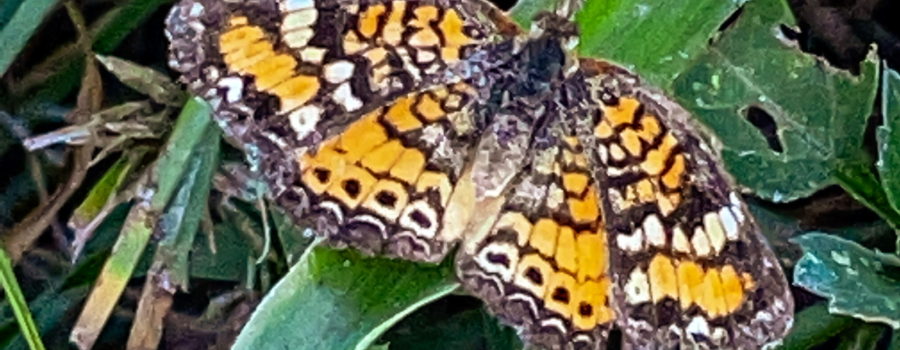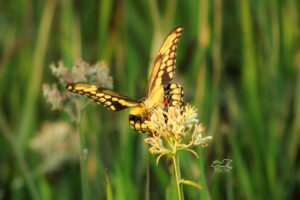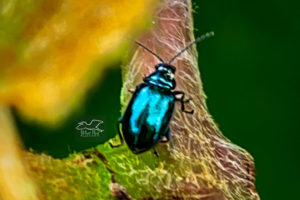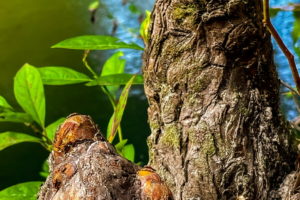The Phaon Crescent is Captivatingly Beautiful

In Ancient Greek mythology there is a story about an old, grizzled and unattractive boatman who had to take the Goddess Aphrodite across the river. When they reached the other side the old man, named Phaon, refused all payment, so instead the Goddess gave him an ointment that made him young and captivatingly beautiful. That old man later (this isn’t part of the myth) shared his name with another captivating beauty, the Phaon crescent butterfly (Phyciodes phaon). The Phaon crescent, also known as the mat crescent is another brush footed butterfly like the American lady and the gulf fritillary (it’s quite easy to see the similarities). It can be found from North Carolina south through Florida and along the southern United States to California. It’s also found in Mexico, Guatemala, Cuba, and the Cayman Islands. During the summer strays can sometimes be found as far north as Nebraska and Wyoming, but this is unusual since these butterflies have a very strong preference for fogfruit plants and the fogfruits are tropical plants that can’t survive freezing temperatures.

There are actually several types of crescents in the Unites States, but only the Phaon crescent and the very similar looking pearl crescent (Phyciodes tharos) are found in Florida. To make things even more difficult for us amateur naturalists, these two butterflies often fly and feed together. Fortunately, there are a couple of differences that are pretty easy to see if you know what to look for. The Phaon crescent has a cream colored bar on the forewing that the pearl crescent lacks (hers is bright orange). The pearl crescent also has less elaborately checkered wing edges. Finally, when seen together, the Phaon crescent is slightly smaller than the pearl crescent. Phaon crescents are also often seen in the company of yet another brush footed butterfly, the common buckeye, which is where I saw them. Both of them, along with some smaller butterflies and some bees and wasps were flying around and feeding in a patch of blackjack that grows over one of our kennel septic tanks.

Even though I happened to spot “my” Phaon crescents on blackjack, they are most commonly found on or around turkey tangle, a type of fogfruit, common in Florida. There are actually several patches of turkey tangle around our kennels, too, so they really weren’t in a terribly unusual spot. Besides turkey tangle and blackjack, adult Phaons will also feed on other members of the Verbena family like Tampa verbena , and occasionally also on asters. The larvae or caterpillars, however, only feed on fogfruits. That’s why the female Phaon crescent lays her eggs in clusters on the undersides of the turkey tangle leaves. The caterpillars are relatively small and a light brown with darker brown to black stripes. They also have small setae, which if touched can cause a mild rash in sensitive people. For this reason, I would consider these guys touch me nots unless you know that you’re not sensitive.

The Phaon crescent is usually found in open areas, sometimes with disturbed ground such as roadsides, powerline right of ways, dunes, pastures or unused farm fields, and clearings in the woods. The males tend to hang around the fogfruit patches waiting for receptive females to come along. Since fogfruits are low lying ground cover plants, it is actually unusual to see Phaons flying more than 6-12 inches above the ground. In it’s northern range, Phaon crescents have all headed south for the winter, but here in the Florida peninsula we should be able to find a least a few of them until the first frost. In south Florida, though, they are flying all year round. We may not get the beautiful fall foliage or winter landscapes that folks up north get, but we do get pretty weather and pretty butterflies all year round down here. There’s something to be said for just about anyplace you call home!

If you love beautiful nature photography and artwork accompanied by informative and interesting content, then this is a great blog for you. Subscribe below and join the family!





Recent Comments